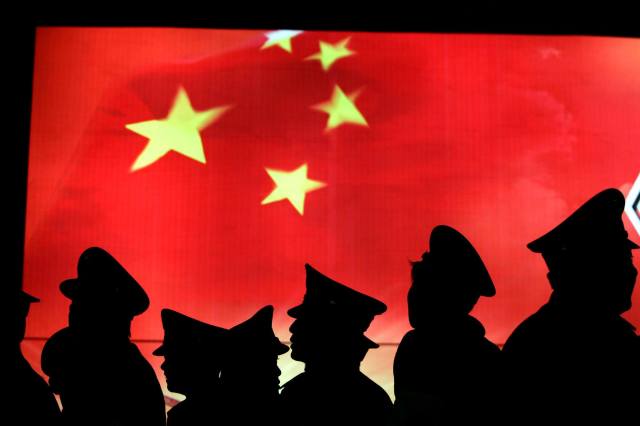
The rise (or, rather, the return) of China as an economic superpower is disconcerting for us in the West. Not because the world’s most populous nation doesn’t belong in the first rank (it obviously does), but because the People’s Republic is, at least nominally, a communist state.
As David Fickling explains in an illuminating article for Bloomberg, we’ve been here before – not with China, but the USSR.
We’ve largely forgotten it, but, for most of the Cold War period, Soviet GDP was second only to America’s – the bear and the eagle were economic as well as a military rivals:
“Around the middle decades of the 20th century, Moscow presided over a China-style economic miracle that caused many in the West to fear they would be overtaken. In the 1950s, the Soviet economy grew faster than that of any other major country barring Japan.”
How did that happen? If communism is so inferior to capitalism, how did the world’s #1 communist power outpace America for so many years?
Actually, it’s not so difficult for a less developed economy to grow faster than a more developed one: not when it has an expanding, literate and reasonably healthy workforce; not when it has access to plentiful resources and to technologies tried-and-tested elsewhere. Those things give you a lot of low-hanging fruit, ripe for the plucking.
It takes a huge amount of corruption, inefficiency and bad luck to obliterate the productivity improvement that comes from introducing electricity and running water where they were previously absent; or from replacing dirt tracks with metalled roads or horse-drawn ploughs with tractors. As long as enough of the proceeds of such investment are recycled into other such investments, growth is pretty much inevitable.
The danger with low-hanging fruit is that you don’t have to get better at picking it for the harvest to keep piling up. However, when the easy opportunities run out, which they always do, you’re unable to move to the next level:
“Like the Soviet Union in the 1970s, China is coming to the end of a long labor-force boom, and hoping that an orgy of investment will keep the old magic going while stabilizing its fraying frontiers.”
China is keeping its “orgy of investment” going by expanding its infrastructure networks beyond its borders (the Belt and Road programme) – and also into the remotest parts of its own territory.
Fickling argues that in doing so, the Chinese government is repeating mistakes made by the Soviet Union:
“From the 1960s, Siberia sucked up about a third of the Soviet Union’s heavy-construction equipment despite hosting just a fraction of the country’s population, as Moscow pumped in capital to develop gas fields, coal mines, aluminum plants, and a duplicate of the Trans-Siberian railway several hundred kilometers to the north.”
The misallocation of capital (or, in other words, the attempt to keep allocating capital the only way the central planners knew how) damaged Soviet productivity. In the 1980s it became clear that the system couldn’t keep up with the West. Perestroika under Gorbachev was a last throw of the dice – and the fact that the USSR is long gone is a clue to how that turned out.
Will it be the same story in China? Fickling points out that the least developed regions of the country have “swallowed up the bulk of fixed capital ever since 2007” and that Chinese productivity is suffering:
“Unit labor costs have outpaced productivity growth since 2008, meaning the economy has been growing less and less competitive over time, according to a report last month by the Conference Board, a research group. About 90 percent of China’s advantage over the U.S. in terms of unit labor costs in 2016 was explained by currency effects alone, economist Siqi Zhou wrote.”
These are fascinating parallels, but there are clear differences too. Unlike the old Soviet Union, the People’s Republic has a thriving class of entrepreneurs besides an interventionist state. It has world leading technology companies like Alibaba and Tencent – as well as impressive state-led investments in areas like quantum computing. Of course, the Soviets could boast technological achievements of their own – most famously in spaceflight; however, these too were eventually overshadowed by the Eagle‘s wings.
Other key differences between the Soviet and Chinese economies include the latter’s greater economic openness to the West and its development of an abundantly-supplied consumer culture
In short, the Chinese economy is more capitalist than the USSR’s ever was. An awful lot hangs on whether that’s enough to sustain China’s growth.










Join the discussion
Join like minded readers that support our journalism by becoming a paid subscriber
To join the discussion in the comments, become a paid subscriber.
Join like minded readers that support our journalism, read unlimited articles and enjoy other subscriber-only benefits.
Subscribe